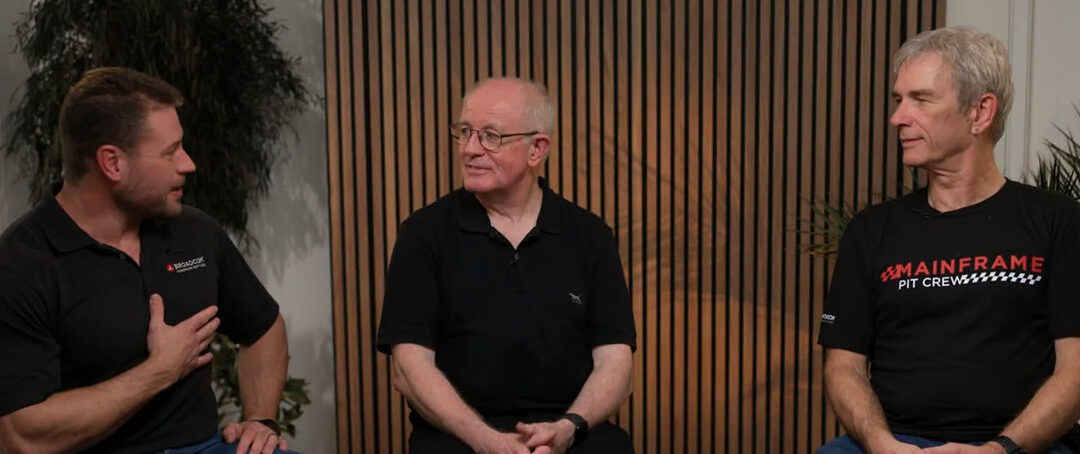For International Women’s Day, Vertali’s Linda McGrath reflects on the changing fortunes of women in the sector
When I started in this industry almost three decades ago, the world was a very different place in terms of perceptions of gender, and gender balance in the workplace. Here’s an example.
I’ve attended the Guide Share Europe (GSE) UK conference for many years, and, at my first event, I was one of four or five women, maybe one percent of attendees. Today, more than 100 women attend each year. My friend Aileen Wynne, a mainframe systems programmer at AIB, is the conference’s Women in STEM Chair. Under her leadership, the Women in IT stream is thriving. At the 2024 event, Michelle Harris and Dolly Popat from Macro 4 ran a session entitled “Women in the mainframe world – yes, we exist and are thriving!” – but there still aren’t enough of us.
The role of women in society has changed in the 27 years since I started working with mainframes, with our role in the workplace – and sectors previously seen as the sole preserve of men – continuing to evolve. And of course, we can look back to pioneering women in IT. But many were outliers, and unsung heroes, held back by the culture of their times. The number of women in IT has only really increased demonstrably and meaningfully in the last couple of decades.
You’ve probably heard of Ada Lovelace, credited as the world’s first computer programmer way back in the 19th century, working out how Charles Babbage’s Analytical Engine could perform computations. Hollywood actress and inventor Hedy Lamarr created the technology that laid the foundations for GPS, Bluetooth, and Wi-Fi. NASA’s Katherine Johnson, mathematician and computing pioneer, features in the book and film Hidden Figures.
Women in the workplace today
More recently, progress has been made, but there’s still a lot more to do. McKinsey’s Women in the Workplace 2024 study, reported that in the last decade, “women’s representation has increased at every level of corporate management… women today make up 29 percent of C-suite positions, compared with just 17 percent in 2015.” Great news. However, “progress has been much slower earlier in the pipeline, at the entry and manager levels.” 1 How can women progress to more senior leadership levels if we’re struggling to make progress lower down the ladder?
The stats are far worse for IT. The Women In Tech Network says that in 2024, women comprised only 11% of executive positions within the tech industry. 2 For last year’s International Women’s Day (IWD), the UK’s Institution of Engineering and Technology (IET) reported that while more than one million women now work in STEM occupations, 3 women still only account for 29 percent of STEM workforce. 4 The Women into Science and Engineering (WISE) campaign also noted that female employees account for 18.7% of the total workforce of IT professionals, and account for 21.7% of the total workforce of IT technicians.
McKinsey estimates it will take another 50 years to achieve gender parity for all women in the workplace. The International Women’s Day campaign says that “at the current rate of progress, it will take until 2158, which is roughly five generations from now, to reach full gender parity, according to data from the World Economic Forum.” Equality of pay in the industry has improved, but there is still a way to go.
Keeping up the pressure
We need to keep up the pressure, continue developing our professional and personal networks, and keep building our presence in the industry. And things are clearly better now than before. There are simply more of us around. At my own company, Vertali, we have a board of six directors and two are women – I’m Global Sales Director, and my colleague Helen Turner is Operations and PMO Director. Helen is hugely experienced; here’s a blog she wrote recently on workplace mentoring and skills development.
When I look at my wider colleagues, I see that at least 15 are women, many in highly technical roles, and extending to project managers, our finance team, and marketing. Leanne Wilson is an excellent example. A senior technical delivery manager and cyber security consultant, Leanne’s a rising star in this field. In addition to juggling multiple client projects, she is now GSE UK’s Conference Manager, chairs a GSE working group, presents at external events, and has articles and blogs published in outlets such as SHARE’d Intelligence, including this recent strategy paper on Planet Mainframe on mainframe security trends 2025.
As a growing business with a global client base, Vertali is always on the look-out for new talent, including experts in mainframe security and systems programming. We have around 30 full-time employees plus a worldwide network of consultants and technical specialists in the UK, Europe, APAC, and North America, working on client projects in all four continents, and I want more of them to be women.
The more that young women are attracted to work in the industry, and the more academic courses and opportunities that are made available to them – something I see at the GSE UK conference each year, particularly with the students who attend – the more that pool of talent will increase. The more people that we have with different experiences, skills and outlook, the stronger we will be as a mainframe community, and as an industry.
Today, however, the majority of full-time job applicants and contractors that we talk to are male. And the majority of clients that I talk to are male. But that is gradually changing. While the wider culture around gender may have shifted, and we have an economy and employers more inclusive of women, there is still a lag for that change in attitude to filter through in some quarters. We all have to do our bit. Vertali’s own New to Z (NTZ) training and professional development programme is proving highly successful in bringing forward the next generation of mainframers, and I’d like to see an increasing number of women apply for and be recruited into the NTZ initiative in the future.
As this year’s IWD theme puts it, let’s #AccelerateAction. There’s clearly scope to speed up that change in the IT industry in general, and in the mainframe world in particular, despite the advances we’ve already made.








0 Comments